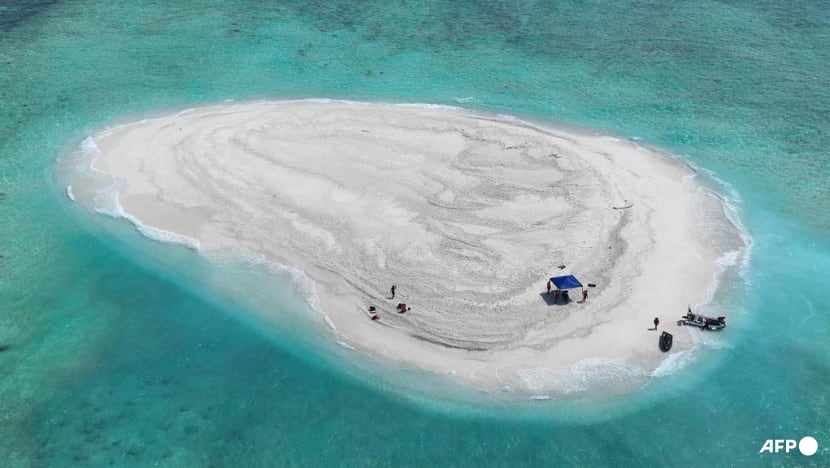Vietnam opposes China, Philippines' moves on South China Sea reef

This handout photo taken on Mar 21, 2024 and received from the Philippine Coast Guard and Bureau of Fisheries and Aquatic Resources shows an aerial view of Philippine scientists inspecting Sandy Cay reef, near the Philippine-held Thitu Island, in Spratly Islands, in disputed waters of the South China Sea. (File photo: AFP)
HANOI: Vietnam has sent diplomatic notes to China and the Philippines to protest against their activities in contested South China Sea waters, and urging them to respect its territorial claims, it said on Saturday (May 3).
The statement follows activities by China and the Philippines in Sandy Cay, which Vietnam considers part of its territory, Vietnam's foreign ministry spokesperson Pham Thu Hang said.
Chinese state broadcaster CCTV last week said its coast guard had landed on Sandy Cay as part of maritime control operations to exercise its sovereignty, while the Philippines sent a team to the sandbars and found no one there.
Both China and the Philippines also raised flags on Sandy Cay, actions analysts described as "petty provocations".
"Vietnam requests that relevant parties respect Vietnam's sovereignty, comply with international law, and contribute to maintaining peace and stability in the East Sea," Hang said in the statement, using Vietnam's name for the South China Sea.
"Vietnam has communicated and sent diplomatic notes protesting relevant countries regarding activities that violate Vietnam's sovereignty over Sandy Cay and related entities of the Truong Sa," she said.
Truong Sa is the Vietnamese name for the Spratly Islands.
The Chinese and the Philippine embassy in Vietnam did not immediately respond to Reuters' requests for comments during the weekend.
Sandy Cay is close to Thitu Island, the largest and most strategically important of the nine features the Philippines occupies in the Spratly archipelago, where China, Malaysia, Taiwan and Vietnam also have a presence.
China claims more than 90 per cent of the potentially energy-rich South China Sea via a U-shaped "nine-dash line" on its maps that stretches into Southeast Asia and cuts into the exclusive economic zones of Brunei, Indonesia, Malaysia, Vietnam and the Philippines.














